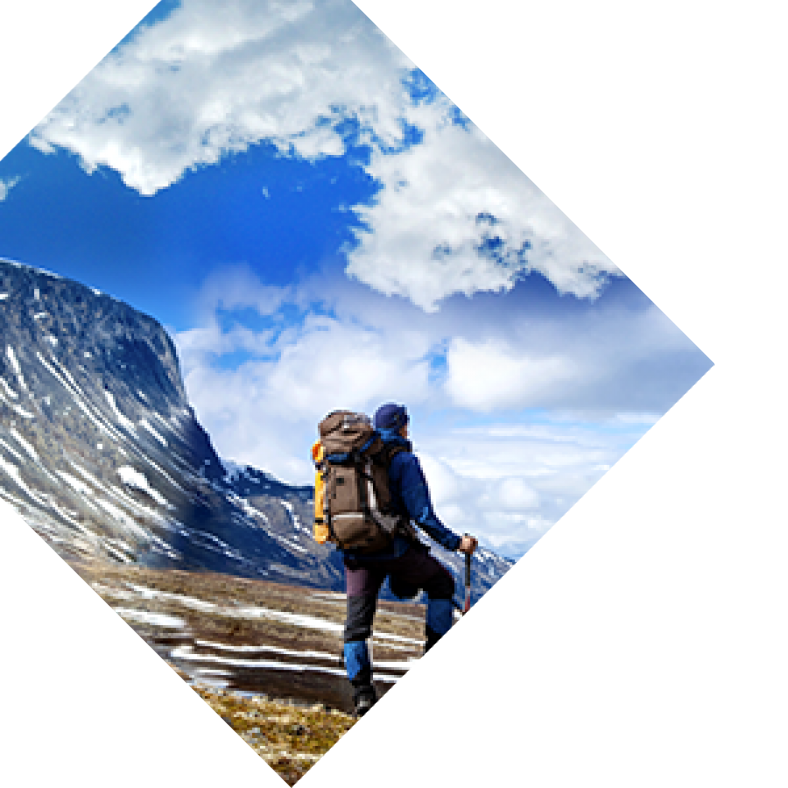Running is a minimalist sport: A pair of shoes, tights, shirt, and off you go. But the longer the runs, the more gear is needed: jacket, cap, water bottle, small pack, and – particularly key for trail runners in the mountains – a smartphone. It provides safety, plus you can log your run using Strava, Runtastic or similar apps. The cool side benefit: the camera on many smartphones is amazingly good these days, so you save the weight of a larger camera. Sunsets, lunch at a hut or beside a mountain creek … such static shots are easy to photograph using the smartphone. The risk of being out of focus or shaking the camera is low, and you can take your time to find just the right angle when snapping the photo. Catching your buddy sprinting to the top of the next pass is however much more difficult. Smartphone cameras have a few disadvantages compared to larger cameras: First, generally, there is a shutter delay; second, you mostly have smaller lenses with lower light sensitivity; and, finally, the design of the sensors is quite small, which results usually in lower quality photos. NEVERTHLESS, it is totally amazing the kind of photos that one can get from a smartphone. I take a lot of photos with my smartphone and have quite a bit of fun with it. Here are a few tips to help you take successful running photos without a large, heavy camera: 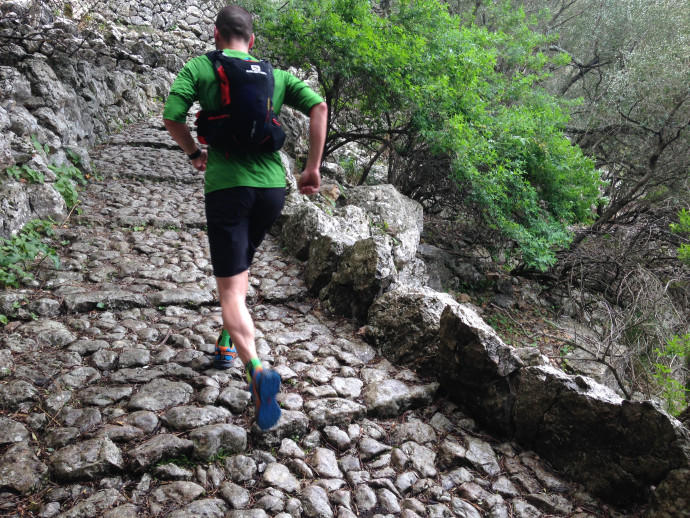 Make note of running direction and distance of the runner from you If the runner runs across the photo, you need a fast shutter speed so the runner is not out of focus. If the runner is moving toward you or at a slight diagonal, the exposure time can be a little longer without risking fuzzy images from movement. In low light conditions, however, this is hard to avoid. A remedy is available with the Manual Cam app, as one example. With it, you can manually set the exposure time (and much, much more). You still need enough light for a good, sharp photo, but you have the option of trading off a faster shutter speed at the cost of depth of field. (Note: More depth of field demands a faster shutter speed.) Avoid backlight A smartphone camera works best when the light is behind you. But from time to time you can only catch your subject when you are shooting directly into the sun or at least heading in that direction. In such cases, the exposure meter is fooled from all of the light in the lens. Because there is so much light hitting the camera, sensors or exposure meter, it lowers the exposure so far that suddenly the photo – and in particular all of the people in the foreground – appear to be dark or even black. So you have to take extra steps. With an iPhone, you just press a little longer on the spot on the screen where the most important part is. The lighting and distance will be thus recorded. If that doesn’t totally work out, then just simply swipe your fingers upward to make the photo brighter (swiping downward makes a photo darker). An alternative is to use the Manual Cam app mentioned above. Use pre-focus as an aid Because a smartphone camera doesn’t have a super quick autofocus, you need to focus prior to hitting the shutter release, i.e. determine where the runner will be in the photo to set the focus on the correct spot in advance. With an iPhone, for example, you do this by pressing on the screen longer to set the focal point. When the runner appears, you only have to hit the shutter release and thus you can better capture the right moment when the runner is in the perfect spot (see below for details on image composition). And of course the photo is in focus. Take advantage of Burst Mode, or continuous shooting, for sports photography Many smartphones offer the opportunity for continuous shooting. That means you can take 10 photos or more in less than a few seconds. Particularly with action shots, this is a superior option to catch exactly the best moment, for example when the runner has a perfectly extended leg and appears to float in the air in front of an ideal background. After taking a series of shots, you then take your time on your phone determining the best of the series – and then delete all of the others so your memory isn’t unnecessarily filled.
Make note of running direction and distance of the runner from you If the runner runs across the photo, you need a fast shutter speed so the runner is not out of focus. If the runner is moving toward you or at a slight diagonal, the exposure time can be a little longer without risking fuzzy images from movement. In low light conditions, however, this is hard to avoid. A remedy is available with the Manual Cam app, as one example. With it, you can manually set the exposure time (and much, much more). You still need enough light for a good, sharp photo, but you have the option of trading off a faster shutter speed at the cost of depth of field. (Note: More depth of field demands a faster shutter speed.) Avoid backlight A smartphone camera works best when the light is behind you. But from time to time you can only catch your subject when you are shooting directly into the sun or at least heading in that direction. In such cases, the exposure meter is fooled from all of the light in the lens. Because there is so much light hitting the camera, sensors or exposure meter, it lowers the exposure so far that suddenly the photo – and in particular all of the people in the foreground – appear to be dark or even black. So you have to take extra steps. With an iPhone, you just press a little longer on the spot on the screen where the most important part is. The lighting and distance will be thus recorded. If that doesn’t totally work out, then just simply swipe your fingers upward to make the photo brighter (swiping downward makes a photo darker). An alternative is to use the Manual Cam app mentioned above. Use pre-focus as an aid Because a smartphone camera doesn’t have a super quick autofocus, you need to focus prior to hitting the shutter release, i.e. determine where the runner will be in the photo to set the focus on the correct spot in advance. With an iPhone, for example, you do this by pressing on the screen longer to set the focal point. When the runner appears, you only have to hit the shutter release and thus you can better capture the right moment when the runner is in the perfect spot (see below for details on image composition). And of course the photo is in focus. Take advantage of Burst Mode, or continuous shooting, for sports photography Many smartphones offer the opportunity for continuous shooting. That means you can take 10 photos or more in less than a few seconds. Particularly with action shots, this is a superior option to catch exactly the best moment, for example when the runner has a perfectly extended leg and appears to float in the air in front of an ideal background. After taking a series of shots, you then take your time on your phone determining the best of the series – and then delete all of the others so your memory isn’t unnecessarily filled.
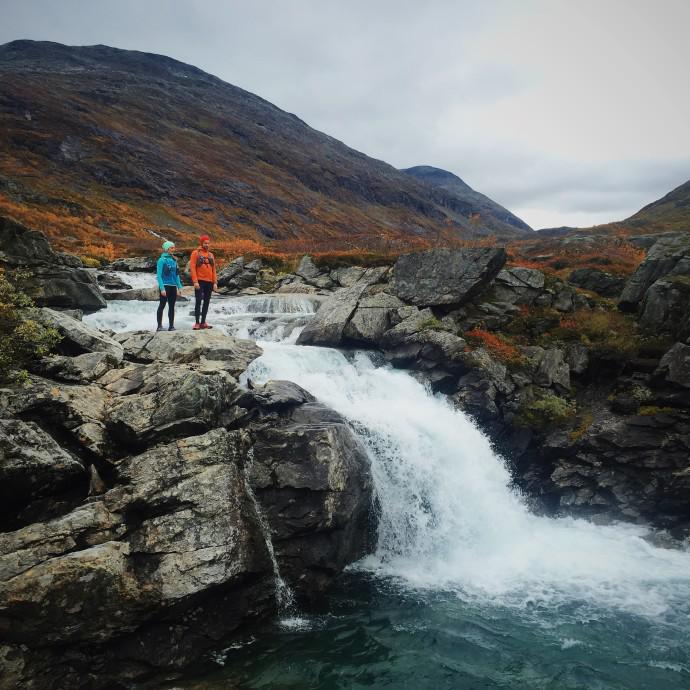
Pan with the subject to suggest fast motion Because smartphone cameras need a lot of light, action shots quickly get out of focus. That doesn’t happen due to the dreaded shaking while shooting. Rather, it happens due to the speed at which a runner moves through the frame. If in poor light conditions, using faster shutter speeds from choosing manual settings (Manual Cam App) aren’t possible, but there is the opportunity to pan with the subject when taking the photo. In doing so, you get an effect with a blurred background, that is, the background is out of focus and blurry whilst the runner is still in focus. This is an effect that is often used when photographing cars. In using this effect, yu have to be careful to move your pan at the same speed at which the runner moves past the camera. That demands a little practice, as well as setting the lighting and focal point prior to taking the photo. But it can be accomplished. Avoid the zoom Try to avoid using the zoom of a smartphone camera. Although the photo quality of many smartphones is astounding, the image quality rapidly declines in zoom mode. 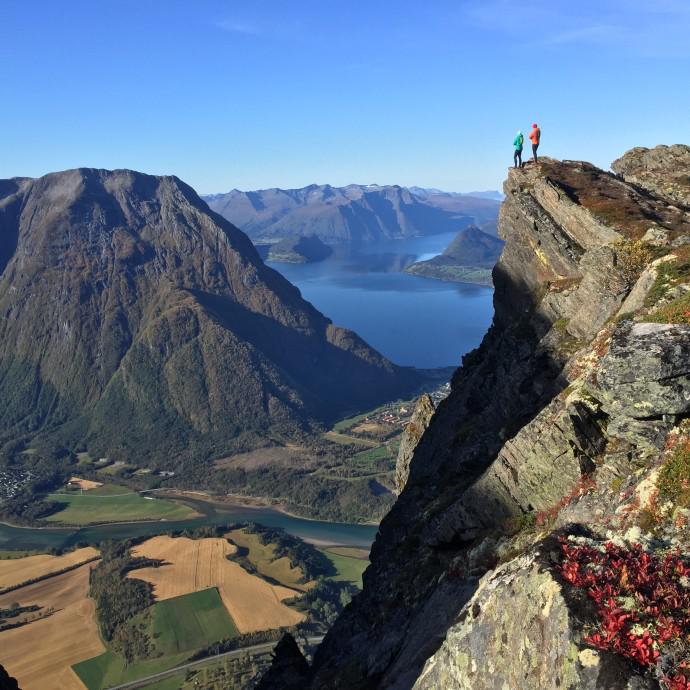 Think through image composition prior to shooting No matter if you’re using a smartphone or a professional SLR camera, image composition that is well thought out is always important for a great photo. Most important is to present your subject in an exciting manner. To do that, it’s best to move around and take a look from different angles and heights. You can take a photo with the runner either very tiny in a huge landscape shot, or so he or she nearly fills the frame. Find lines in the photo that seem to move toward the runner so your eye is led to the most important part of the photo. Another basic rule in image composition is the so-called Golden Ratio. This divides the frame in a classic manner and actually stems from the old Greek empire. It splits the image area in three rows and three columns. Where the lines cross are the points where you should place your most important image elements, such as our runner. That creates a certain excitement in the photo. If there are rocks, trees or even an interesting wall nearby, one can put these out of focus in the foreground to even better direct the observer’s eye to the runner. It’s also advisable not to just shoot in landscape (horizontal) but also in portrait (vertical) format . Many people shoot everything horizontally because that also looks great on the screen. But some subjects just look better in portrait and should also be shot in that way. That also gives you great wallpaper photos for the lock screen of your smartphone. And, last but not least, one should avoid a busy background. That could mean branches growing out of a head or bright sunspots that draw the eye toward them.
Think through image composition prior to shooting No matter if you’re using a smartphone or a professional SLR camera, image composition that is well thought out is always important for a great photo. Most important is to present your subject in an exciting manner. To do that, it’s best to move around and take a look from different angles and heights. You can take a photo with the runner either very tiny in a huge landscape shot, or so he or she nearly fills the frame. Find lines in the photo that seem to move toward the runner so your eye is led to the most important part of the photo. Another basic rule in image composition is the so-called Golden Ratio. This divides the frame in a classic manner and actually stems from the old Greek empire. It splits the image area in three rows and three columns. Where the lines cross are the points where you should place your most important image elements, such as our runner. That creates a certain excitement in the photo. If there are rocks, trees or even an interesting wall nearby, one can put these out of focus in the foreground to even better direct the observer’s eye to the runner. It’s also advisable not to just shoot in landscape (horizontal) but also in portrait (vertical) format . Many people shoot everything horizontally because that also looks great on the screen. But some subjects just look better in portrait and should also be shot in that way. That also gives you great wallpaper photos for the lock screen of your smartphone. And, last but not least, one should avoid a busy background. That could mean branches growing out of a head or bright sunspots that draw the eye toward them. 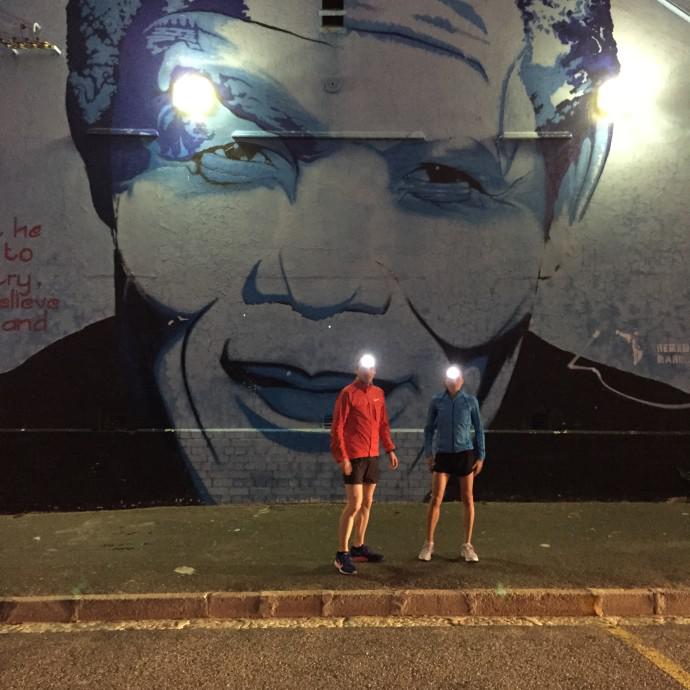 Get help with a head torch All smartphones offer a built-in flash. But using that to shoot running photos either doesn’t work at all, or the results are horrid. Much better is to solve the problem of insufficient (day) light with for example a head torch. Set the light beam on wide and then try it out. When it comes to this point, you are most certainly pushing the limits of the camera and sensors, and you’ll have to accept a lot of noise (distortion, splotches or graininess) in the image quality. But sometimes it’s really not about technical perfection, but just a good photo for the memories. Choose apparel If your running partners are thrilled with great photos, try to motivate them to wear bright, colourful tops. In particular on dreary days, you can still get great images where you can still find the runner. Black, grey and dark blue should be avoided if possible. Find useful apps As previously mentioned, photos using a smartphone are amazingly good. With a little post-processing (please don’t overdo it!), you can increase the quality even further. In addition, there are innumerable apps to help photographers plan their photography. Here are a few of my favourites. VSCO: clear, easy, post-processing. Many presets (mostly in analog format), but also possible are simple corrections of contrast, exposure, colour temperature and saturation. Mextures: picture processing and the ability to add interesting effects such as light flares and leaks, coloured gradients, scratches for a grunge look, etc. Manual Cam: As the name suggests, you get the option to use many manual settings. Sun Seeker: Find out when and where the sun rises and sets.
Get help with a head torch All smartphones offer a built-in flash. But using that to shoot running photos either doesn’t work at all, or the results are horrid. Much better is to solve the problem of insufficient (day) light with for example a head torch. Set the light beam on wide and then try it out. When it comes to this point, you are most certainly pushing the limits of the camera and sensors, and you’ll have to accept a lot of noise (distortion, splotches or graininess) in the image quality. But sometimes it’s really not about technical perfection, but just a good photo for the memories. Choose apparel If your running partners are thrilled with great photos, try to motivate them to wear bright, colourful tops. In particular on dreary days, you can still get great images where you can still find the runner. Black, grey and dark blue should be avoided if possible. Find useful apps As previously mentioned, photos using a smartphone are amazingly good. With a little post-processing (please don’t overdo it!), you can increase the quality even further. In addition, there are innumerable apps to help photographers plan their photography. Here are a few of my favourites. VSCO: clear, easy, post-processing. Many presets (mostly in analog format), but also possible are simple corrections of contrast, exposure, colour temperature and saturation. Mextures: picture processing and the ability to add interesting effects such as light flares and leaks, coloured gradients, scratches for a grunge look, etc. Manual Cam: As the name suggests, you get the option to use many manual settings. Sun Seeker: Find out when and where the sun rises and sets.
Author: Lars Schneider

